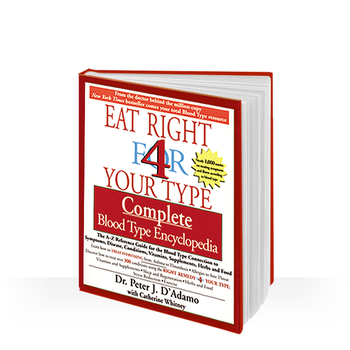dadamowiki
A wikipedia of Dr. D'Adamo's research
A wikipedia of Dr. D'Adamo's research
C O N T E N T S
See Also
AbstractsFlavonoids as inhibitors of MRP1-like efflux activity in human erythrocytes. A structure-activity relationship studyBobrowska-Hagerstrand M, Wrobel A, Mrowczynska L, Soderstrom T, Shirataki Y, Motohashi N, Molnar J, Michalak K, Hagerstrand H. Oncol Res. 2003;13(11):463-9.
Monitoring of MRP-like activity in human erythrocytes: inhibitory effect of isoflavonesBlood Cells Mol Dis. 2001 Sep-Oct;27(5):894-900. Bobrowska-Hagerstrand M, Wrobel A, Rychlik B, Bartosz G, Soderstrom T, Shirataki Y, Motohashi N, Molnar J, Michalak K, Hagerstrand H.
|
COMPLETE BLOOD TYPE ENCYCLOPEDIA
The Complete Blood Type Encyclopedia is the essential desk reference for Dr. D'Adamo's work. This is the first book to draw on the thousands of medical studies proving the connection between blood type and disease. Click to learn more
Click the Play button to hear to Dr. Peter J. D'Adamo discuss .
|
The statements made on our websites have not been evaluated by the FDA (U.S. Food & Drug Administration).
Our products and services are not intended to diagnose, cure or prevent any disease. If a condition persists, please contact your physician.
Copyright © 2015-2023, Hoop-A-Joop, LLC, Inc. All Rights Reserved. Log In